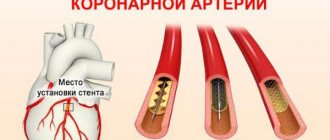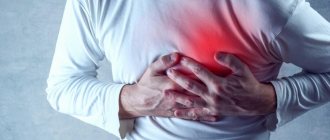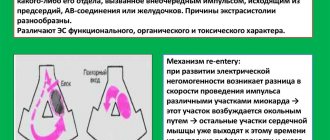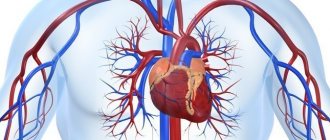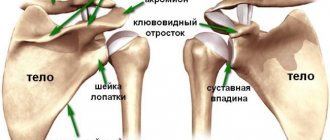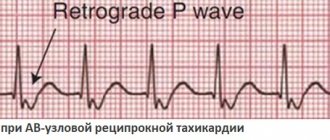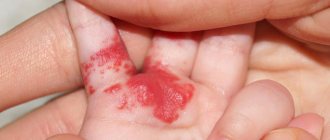With such problems, patients often turn to cardiology centers, not realizing that their unpleasant sensations are not associated with any particular disease, but are secondary clinical signs of spinal pathology. After performing a set of special studies, it is discovered that in such patients the heart does not have any abnormalities; the cause of tachycardia should be looked for elsewhere. Why does tachycardia and heart pain occur with osteochondrosis?
Tachycardia with osteochondrosis
Consequences of spinal osteochondrosis
Osteochondrosis is an insidious and intractable disease that can progress for years. Treatment requires great effort from both medical staff and patients.
What is the danger of osteochondrosis (consequences and complications)
Important. When patients present with complaints of tachycardia or heart pain, doctors first check the patient for the presence of myocardial infarction and angina. Only after such serious diseases have been ruled out are further examinations performed to determine the actual causes of the discomfort.
In-depth comprehensive examinations allow you to have a complete picture of the patient’s health status. Quite often, heart problems arise due to osteochondrosis of the spine or subluxation of the first cervical vertebra. Such diseases should be accompanied by neurologists and orthopedic traumatologists.
Physiology of tachycardia
Causes
- Involutional changes in the body are the most common cause of disc degeneration. As the body ages, the discs gradually lose fluid and become dehydrated. The discs begin to narrow and lose their height, impairing their ability to absorb shock and stress.
- The outer annular fibrous structures of the disc may begin to crack and rupture, weakening the walls of the disc.
- People who smoke, are obese, and participate in activities that require strenuous labor are more likely to develop disc degeneration.
- Injury to the spine or disc due to a fall or blow can trigger the degeneration process.
- A herniated disc can initiate the development of disc degeneration.
- Unlike muscles, discs have minimal blood supply, so they do not have reparative ability.
The mechanism of tachycardia
Over time, the process of damage to the spine and intervertebral discs necessarily affects the nerve pathways, of which there are a lot in the column. They emerge from the spine and connect the internal organs with the central nervous system. Mechanical irritation and compression cause swelling of the nerve bundles, as a result they generate pain, concentrated in the chest area. Most often, such secondary clinical symptoms appear during osteochondrosis of the cervical spine.
Symptoms of arrhythmia in osteochondrosis
The pain radiates to the left arm, back, and the fingers may go numb. Heart diseases also have the same clinical picture; this greatly worries patients and forces them to turn to cardiologists. But there is a difference between pain caused by heart disease and osteochondrosis of the cervical spine.
Table. Types of cardiac pathologies depending on the cause.
| Type of heart pathologies | Causes and clinical description |
| Caused by heart disease | Most often, unpleasant sensations appear after excessive physical activity, untimely intake of medications, critical psycho-emotional stress, abuse or smoking. If pain or tachycardia has a clear cause in the patient’s inappropriate behavior, then they are associated with cardiac problems, you should urgently contact a cardiologist. And, of course, be more attentive to your health and follow all doctors’ recommendations. |
| Caused by osteochondrosis of the cervical spine | These unpleasant symptoms have nothing to do with the problems of the heart itself; they appear as secondary clinical signs of osteochondrosis. The reason is that there are many nerve bundles in the spine that begin with a connection with the heart. Such pains are reflex, they innervate the muscle. The organ itself is completely healthy, and all discomfort is a consequence of the underlying disease. The problems are long-term and increase as the load on the cervical spine increases. This could be ordinary walking or running, sudden tilting of the head, or pressing on the vertebrae. |
How to help patients
Often, heart medications are not used unless the extrasystole is too severe. In this situation, the cause of the relationship between arrhythmia and osteochondrosis is not determined. Prevention of bone tissue diseases is carried out. Such measures are often enough, if you manage to get rid of the underlying pathology, the arrhythmia goes away.
Complex bone tissue therapy involves the use of the following techniques:
- A diet in which you need to maintain the ratio of magnesium and calcium in food.
- Exercise therapy, physiotherapy, massage, osteopathy to improve muscle function.
- Ointments with bee or snake venom, turpentine, tea tree oil. The use of warming ointments that relieve pain and eliminate harmful symptoms.
- Medicines to eliminate edema.
- Products that correct microcirculation in capillaries and relieve muscle spasms.
Treatment with medication is acceptable if heartbeat problems are moderate or severe. In this situation, simultaneously with the indicated therapeutic methods, the specialist prescribes the use of Pentoxifylline to improve the circulatory system of the head and block calcium channels affecting the heart.
If ventricular extrasystole or tachycardia is mild, heart medications are usually not prescribed. In this case, it is determined why the connection between arrhythmia and osteochondrosis arose, and preventive measures are prescribed to combat bone pathology. This is often enough: as soon as osteochondrosis is eliminated, the arrhythmia will go away on its own.
Thoracic and cervical osteochondrosis can cause cardiac pathology
Complex treatment of the skeletal system may include the following procedures:
- A balanced diet that involves consuming foods high in magnesium and calcium.
- Therapeutic exercise, physiotherapy, manual therapy, osteopathy, used to eliminate reflex muscle complications.
- Ointments containing bee or snake venom, turpentine, tea tree oil. The use of warming external agents with an analgesic effect for cervical or thoracic osteochondrosis is exclusively anti-symptomatic (temporarily improves the condition, but does not eliminate the cause).
- Medicines to relieve tissue swelling (diuretic, sedative, anti-inflammatory).
- Drugs for correcting blood microcirculation and eliminating muscle spasms (for example, muscle relaxants).
In this case, in parallel with the measures described above for the treatment of the musculoskeletal system, the doctor may prescribe Pentoxifylline to restore normal blood supply to the brain, calcium channel blockers that affect the heart, and class 3 antirhythmics (Amiadoron, Amiacordin, Cardarone, Sotalex and others medications containing sotalol or amiadorone).
In extremely severe cases, temporary or permanent cardiac pacing (installation of an artificial pacemaker) may be indicated. Eliminating only one arrhythmia without measures to treat osteochondrosis is useless - the cause of the heart rhythm disturbance will remain, and no medications will be able to help the patient. Only complex therapy is effective in the case of complicated arrhythmia caused by pathologies of the osseous-ligamentous apparatus.
What is tachycardia
During this disease, the number of heartbeats at rest exceeds 90 bps. If such a fast rhythm is observed during a period of physical activity, then the phenomenon is considered not pathological, but normal physiological.
Increased heart rate with tachycardia
Important. Tachycardia is not a disease, but a symptom of many other pathologies. Most often it occurs due to problems of the autonomic or endocrine system and various forms of arrhythmia. Osteochondrosis can pinch nerve fibers and bundles located on the surface of the vertebrae. As a result, problems arise in the activity of the autonomic nervous system, and tachycardia appears. Depending on the cause, tachycardia can be sinus, paroxysmal and fibrillation. During osteochondrosis, sinus tachycardia occurs; its clinical signs will be discussed in this article.
Features of sinus tachycardia in osteochondrosis
The cause of disturbances in the physiological rhythm of the heart is distorted nerve impulses from the sinus node. Disturbances in its functioning appear as a result of irritating effects on nerve endings. Some patients may not notice a change in heart rate, while others may experience a feeling of fear and shortness of breath. Severe attacks contribute to increased sweating.
How is tachycardia related to osteochondrosis?
Patients should remember that regardless of the cause of tachycardia, it has the same negative impact on the body. With long-term pathology, the heart muscle may degenerate, the general blood supply to internal organs may deteriorate, etc. If there are problems with disturbances in the rhythm of contraction of the heart muscle, then physical and motor activity should be limited.
Symptoms of pathology
Tachycardia, as mentioned above, in most cases is not an independent disease, but a clinical sign of other complex disorders in the functioning of the body. During attacks, the patient complains of such problems.
- Unsharp and wave-like pain. They do not cause much inconvenience, but last for a long period of time. Symptoms may increase or decrease, depending on physical activity and head movements.
- There is a feeling of warmth in the chest, its character causes anxiety. Heat is not related to the parameters of the indoor microclimate or the weather outside; it occurs suddenly and for no apparent reason.
- The left arm weakens, it is impossible to lift the usual weights. In difficult cases, the little finger becomes numb, tactile perception disappears, and mobility is sharply limited.
How does tachycardia manifest?
Important. With such symptoms, it is strictly forbidden to self-medicate and take heart medications. This is a waste of time; it is necessary to eliminate the causes of unpleasant sensations - to treat osteochondrosis.
When to see a cardiologist
In most cases, arrhythmia appears simultaneously with other signs of osteochondrosis at the 2nd radiographic stage. Therefore, pathology is indicated by both heart rhythm disturbances and back pain, limitation of movements, crunching in the spine when bending or turning. Any of these symptoms should be a signal to consult a doctor for medical help.
Modern diagnostics
Only experienced doctors can make an accurate diagnosis of the disease. Several methods are used for this.
- Novocaine blockade. Patients are given an injection of novocaine into the cervical spine. This manipulation blocks the passage of impulses from the nerve endings on the vertebrae to the heart muscle. If the tachycardia disappears, then this is an important confirmation of its cause. It is in severe stages of osteochondrosis that pathological changes in bone tissue and intervertebral discs cause compression of nerves and, as a result, tachycardia.
Novocaine blockade - Injections with distilled water . This medical procedure checks the connection between the nerve bundles of the cervical spine and the chest. If after the injection you feel warmth in your chest for some time, this also confirms the connection between tachycardia and osteochondrosis.
Water for injections
Another diagnostic method is palpation of the vertebrae. When the places near the exit of the nerve endings are compressed, the tachycardia intensifies, and all negative sensations increase. Based on a preliminary diagnosis, the patient should be sent for a thorough examination.
Stages of disc degeneration
The progression of disc degeneration can be classified into the following stages:
Dysfunction
- Possible tears in the area of the fibrous ring of the disc, with irritation of the facet joints at the corresponding level of the spine.
- Loss of joint mobility, local back pain, muscle spasm and restrictions in trunk mobility, especially extension.
Instability
- Loss of fluid from the disc with dehydration and decreased disc height. Weakness of the facet joints and capsules may develop, leading to instability.
- The patient will experience shooting pain, straightening of the spine and a sharp decrease in the range of motion in the torso.
Restabilization
- The human body responds to instability by forming additional bone formations in the form of osteophytes, which, to a certain extent, stabilize the spine. But excess bone formation can lead to spinal stenosis.
- Back pain usually decreases but remains less intense. Some people may develop stenosis-like symptoms.
Additional examinations for a final diagnosis
Depending on the patient’s condition and preliminary diagnosis, examinations using modern medical devices may be prescribed.
Computer diagnostics
Allows doctors to see the condition of the bone tissue of the vertebrae in a 3-D image. A CT scanner takes a large number of images at intervals of three millimeters, which are then processed by a computer program and collected into one image. The device provides high accuracy and allows medical workers to become familiar with the real condition of the cervical spine down to the smallest detail. The disadvantage of CT is the inability to diagnose the condition of soft tissues.
CT scan of the cervical spine
Magnetic resonance imaging
The most modern and safest examination method for the patient’s body. The image is obtained by capturing magnetic vibrations of soft tissue. The waves are recorded by special high-precision equipment and recorded on image media. Due to the fact that the nerve endings that cause tachycardia do not have bone formations, their condition can only be determined by MRI.
The use of traditional X-ray machines does not apply to modern methods of diagnosing problems with the cervical spine and is currently used only in poorly equipped clinics.
MRI of the cervical spine
Based on a complete diagnosis, doctors determine the cause of tachycardia. If pathological phenomena are provoked by osteochondrosis, then the innervation of the heart muscle is explained by the following factors.
- Nerve fibers associated with the autonomic nervous system are pinched. This distorts the nerve impulses entering the heart muscle; the strength and frequency of its contractions are not related to the actual needs and loads. If tachycardia is provoked by physiological impulses reflecting increased physical activity or a psychological state, then such a reaction is considered normal and is not considered a pathological condition.
- Associated problems with the left arm appear due to impaired blood flow. When osteochondrosis becomes complicated, not only nerve endings are pinched, but also blood vessels. Their lumen narrows, the nutrition of the arm muscles worsens. Medical science at this stage does not have proven information about the connection between hand numbness and other pathologies.
Stages of osteochondrosis
As practice shows, by carefully monitoring their condition, patients can help doctors correctly identify the cause of tachycardia. At the appointment, you need to tell us in as much detail as possible about your feelings: how the pain is changing, are there any associated problems. What might be of interest to the attending physician?
Treatment methods
The goal of treating tachycardia in osteochondrosis is to eliminate the cause of the pathology. The course is prescribed by a doctor, the treatment is long and requires a lot of patience. Unfortunately, it is not always possible to achieve complete restoration of health through medication; in the most difficult cases, operative surgical methods have to be used.
Treatment of tachycardia in osteochondrosis
Drug therapy
Currently, medical science has developed quite effective drugs that make it possible not only to stop the development of pathology, but also to achieve noticeable restoration of damaged tissues.
Important. Angina pectoris with osteochondrosis of the cervical spine does not go away after taking painkillers. They do not block the nerve endings that cause heart rhythm disturbances; such drugs are prescribed only to relieve severe pain.
Differences between angina and heart pain due to osteochondrosis
Orthopedic products
There are special medical corsets that can reduce the load on degraded vertebrae and intervertebral discs. In addition, neck braces significantly limit the mobility of the vertebrae. Both effects have a positive impact on the patient’s well-being; this effect is achieved by reducing the degree of compression of nerve endings. But you should always remember that wearing support corsets for a very long time has negative side effects. The muscles do not take part in maintaining body weight and atrophy over time, which further aggravates the situation.
Neck corset for osteochondrosis
Important. It is recommended to use corsets only during periods of exacerbation of the disease; when the health status has stabilized, other methods of treating osteochondrosis should be used.
Ultrasound therapy
A traditional and quite effective method. Ultrasonic waves heat strictly defined areas of the spine located inside the body. An increase in temperature stimulates blood circulation - nutrition of damaged tissues improves, restoration processes in tissues are accelerated and activated. Modern ultrasound machines can specifically deliver drugs to limited areas of the vertebrae. This is very important when using aggressive medications that have critical side effects. Medicinal substances are supplied only to those areas that require drug treatment, all nearby tissues and internal organs are almost not affected.
Ultrasound for osteochondrosis
Reflexology
Also a traditional method for eliminating tachycardia in spinal osteochondrosis. The human body reacts differently to external stimuli and mechanical influences. In combination with properly selected medications, a significant improvement in the patient’s condition is observed. Reflexology includes mud baths, acupuncture and other neurostimulation methods.
Acupuncture
Therapeutic exercise and massage
As for therapeutic exercise and special massage, they should be treated with extreme caution; all manipulations should be performed only under the supervision of the attending physician. There are additionally several very strict requirements for massage.
- Massage should only be performed by a specially trained certified specialist with a medical education. The fact is that a large number of vital blood vessels and nerve endings are concentrated in the area of the cervical spine. Inept actions cause not only their mechanical irritation with the appearance of sharp pain syndromes, which in itself is very bad. There are frequent cases of vascular ruptures and pathological changes in nerve fibers. The consequences of such unprofessional interventions are very serious. Eliminating them requires a lot of time and money. But there are situations when it is impossible to restore tissue damaged during unprofessional massage, and a person becomes disabled for the rest of his life.
- At the slightest deterioration in health, the massage should be stopped immediately. Repeated manipulations are possible after an unscheduled examination of the patient and consultation with a doctor.
Neck massage
Massage can cause both very positive changes in the patient’s health and very negative ones.
Surgical treatment
The decision to undergo surgical intervention is made only in exceptional cases when the ineffectiveness of medication methods has been proven in practice or in case of a sharp deterioration in health. Patients must understand that such actions can have serious consequences, which are extremely difficult to eliminate in the future. If tachycardia significantly worsens the patient’s well-being, makes him unable to work, or is accompanied by severe pain, then only removal of the damaged areas of the spine gives hope for alleviating the condition. Tachycardia in osteochondrosis of the cervical spine rarely becomes a symptom for making a decision about surgical intervention.
And for this we have all the most progressive and effective methods:
- shock wave therapy
- dosed traction and massage using the Ormed device
- manual therapy
- kinesio taping
- carboxytherapy
- ozone therapy (intravenous administration of ozonized saline solution and subcutaneous local administration of ozone)
- mesoinjection therapy with vascular drugs
- chronomagnetic complex "Multimag"
- physiotherapeutic techniques (high-top, ultrasound, electrophoresis)
- medical therapeutic blockades
Methods for preventing tachycardia in osteochondrosis
When sleeping, use special orthopedic mattresses and pillows. They enable the body to occupy a physiological position, due to this the risks of compression of nerve endings are reduced, and the degree of tachycardia is reduced. If the underlying disease is not in the acute stages, then tachycardia can completely stop during sleep.
Orthopedic mattress
The rule is always relevant: it is much easier to prevent a disease than to treat it. Tachycardia in osteochondrosis does not appear if the underlying disease is absent. And the risks of pathological changes in the bone tissue of the spine can be reduced through an active and correct lifestyle, physical education (but not high-performance professional sports), optimal nutrition and timely visits to the clinic for examination. In the early stages of the development of the disease, the appearance of tachycardia can be completely excluded; it makes itself felt in cases of serious pathologies of the vertebrae and intervertebral discs.
Rules for a healthy lifestyle
